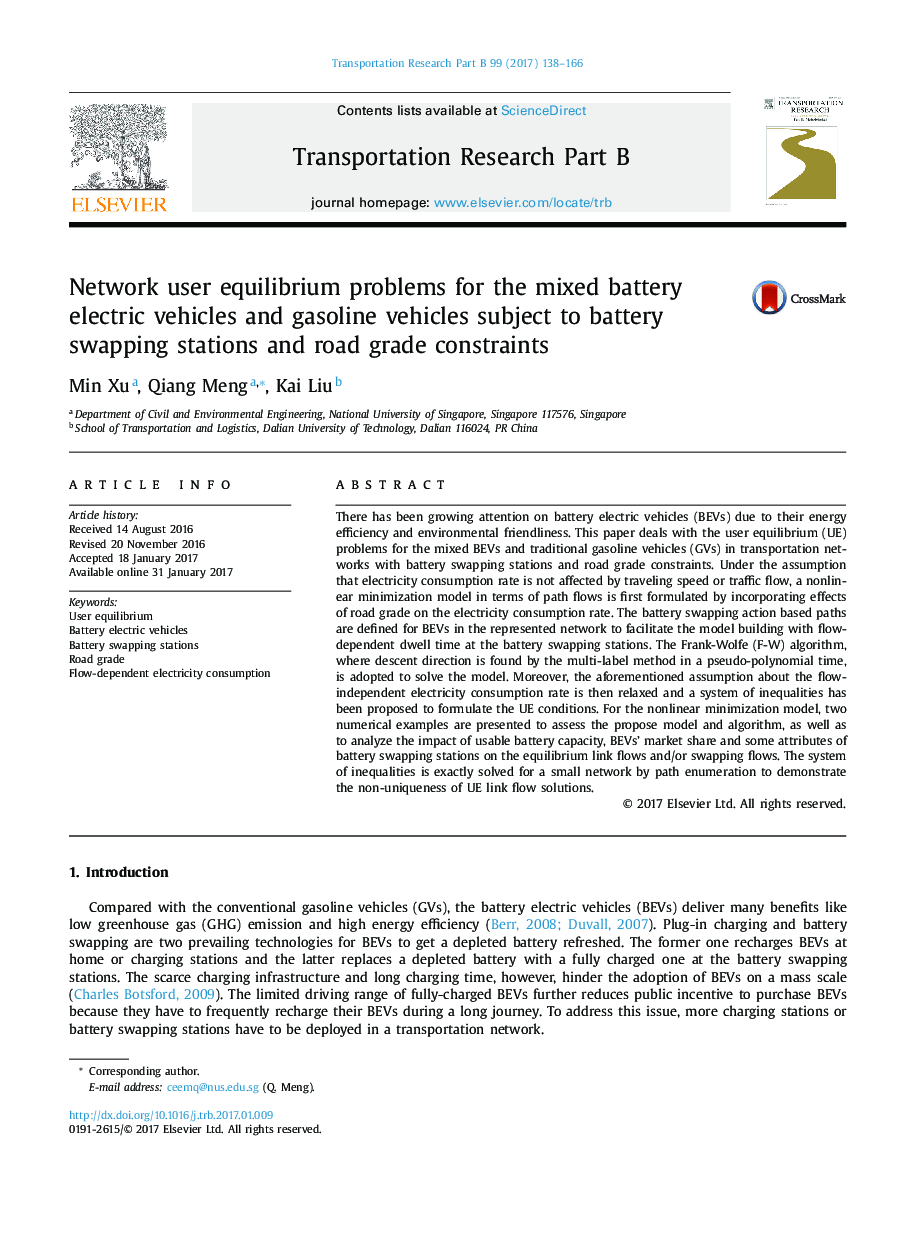| کد مقاله | کد نشریه | سال انتشار | مقاله انگلیسی | نسخه تمام متن |
|---|---|---|---|---|
| 5127052 | 1488947 | 2017 | 29 صفحه PDF | دانلود رایگان |
- A nonlinear minimization model is developed for mixed battery electric and gasoline vehicles in transportation networks with battery swapping stations.
- Effect of road grades on the electricity consumption rate of BEVs, the flow-dependent dwell time and swapping cost at the battery swapping stations are incorporated.
- Network representation with battery swapping action based paths (BSAPs) is applied to facilitate the model building.
- FW algorithmic framework with the multi-label method for the shortest BSAP is proposed to solve the model efficiently.
- UE conditions with flow-dependent electricity consumption rate are modified by a system of inequalities.
There has been growing attention on battery electric vehicles (BEVs) due to their energy efficiency and environmental friendliness. This paper deals with the user equilibrium (UE) problems for the mixed BEVs and traditional gasoline vehicles (GVs) in transportation networks with battery swapping stations and road grade constraints. Under the assumption that electricity consumption rate is not affected by traveling speed or traffic flow, a nonlinear minimization model in terms of path flows is first formulated by incorporating effects of road grade on the electricity consumption rate. The battery swapping action based paths are defined for BEVs in the represented network to facilitate the model building with flow-dependent dwell time at the battery swapping stations. The Frank-Wolfe (F-W) algorithm, where descent direction is found by the multi-label method in a pseudo-polynomial time, is adopted to solve the model. Moreover, the aforementioned assumption about the flow-independent electricity consumption rate is then relaxed and a system of inequalities has been proposed to formulate the UE conditions. For the nonlinear minimization model, two numerical examples are presented to assess the propose model and algorithm, as well as to analyze the impact of usable battery capacity, BEVs' market share and some attributes of battery swapping stations on the equilibrium link flows and/or swapping flows. The system of inequalities is exactly solved for a small network by path enumeration to demonstrate the non-uniqueness of UE link flow solutions.
Journal: Transportation Research Part B: Methodological - Volume 99, May 2017, Pages 138-166
